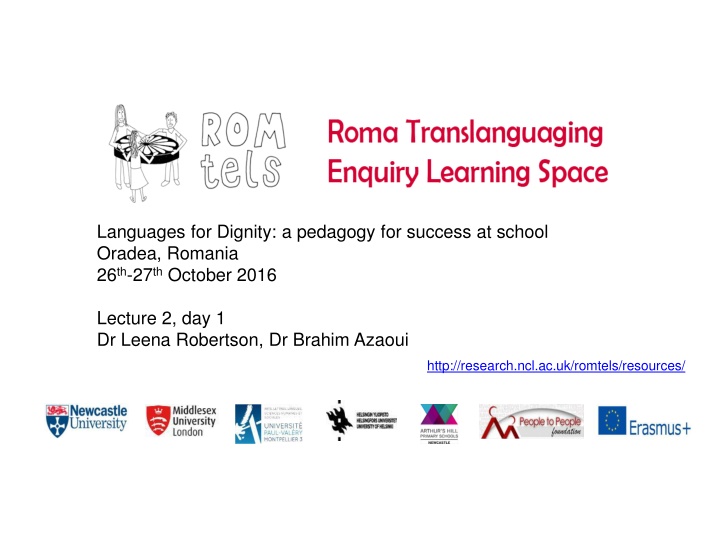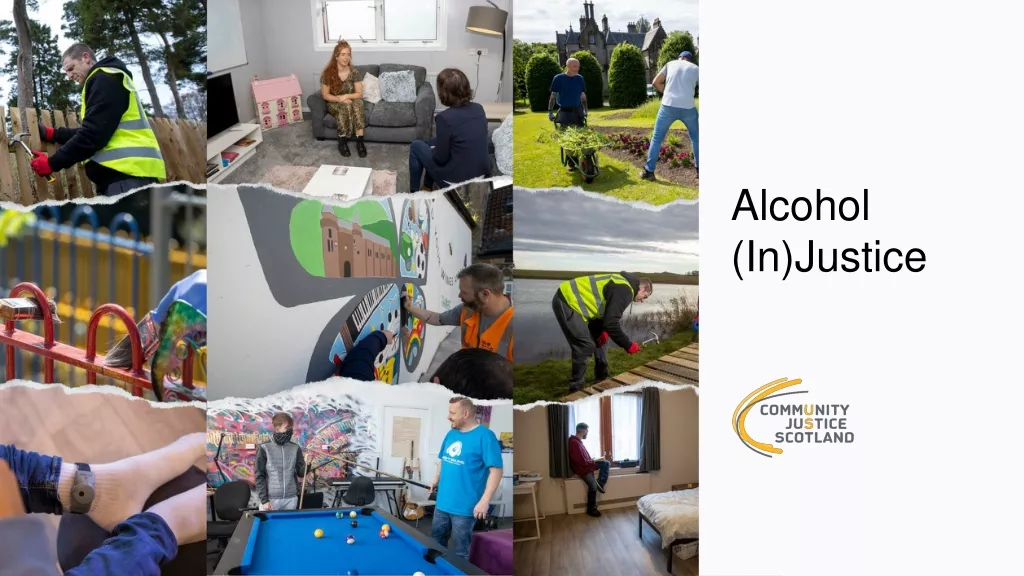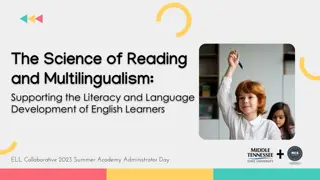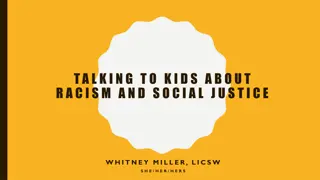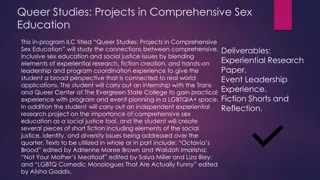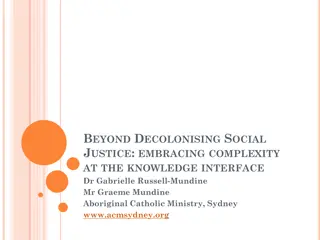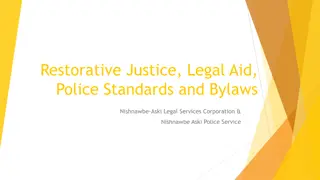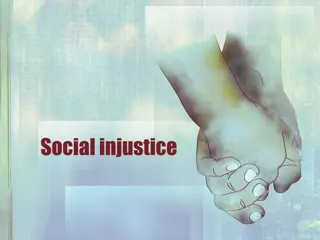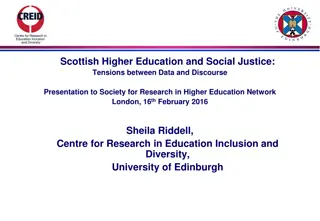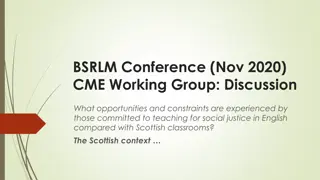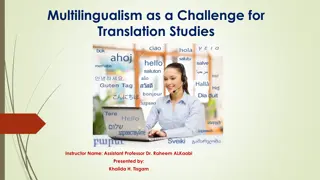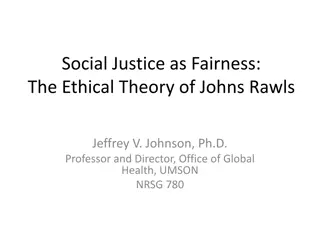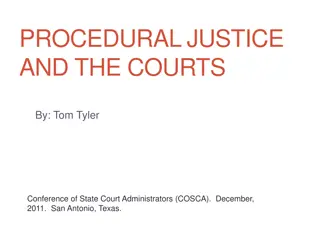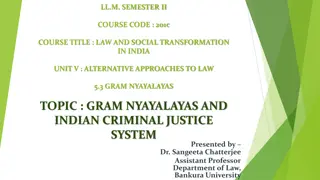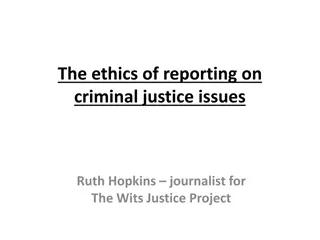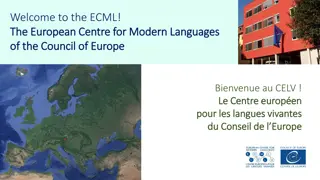Multilingualism and Social Justice in Education
Positioning work within sociocultural perspectives, exploring linguistic policies, addressing fears of bilingualism, advocating for diversity as the norm in education to achieve social justice and multilingualism.
Download Presentation

Please find below an Image/Link to download the presentation.
The content on the website is provided AS IS for your information and personal use only. It may not be sold, licensed, or shared on other websites without obtaining consent from the author.If you encounter any issues during the download, it is possible that the publisher has removed the file from their server.
You are allowed to download the files provided on this website for personal or commercial use, subject to the condition that they are used lawfully. All files are the property of their respective owners.
The content on the website is provided AS IS for your information and personal use only. It may not be sold, licensed, or shared on other websites without obtaining consent from the author.
E N D
Presentation Transcript
Languages for Dignity: a pedagogy for success at school Oradea, Romania 26th-27th October 2016 Lecture 2, day 1 Dr Leena Robertson, Dr Brahim Azaoui http://research.ncl.ac.uk/romtels/resources/ http://research.ncl.ac.uk/media/sites/researchwebsites/romtels/erasmus+logo_mic-421x120.jpg http://research.ncl.ac.uk/media/sites/researchwebsites/romtels/UHelsinki%20copy300px-120x66.jpg http://research.ncl.ac.uk/media/sites/researchwebsites/romtels/NULogo300px-240x84.jpg http://research.ncl.ac.uk/media/sites/researchwebsites/romtels/MU_LDN_partner_2col%20(c)300px-120x66.jpg MontpellierLogo http://research.ncl.ac.uk/media/sites/researchwebsites/romtels/ArthursHillplainbground-120x66.png
Multilingualism, language status, translanguaging Home language use as a pedagogy for learning in school
Positioning our work Dell Hymes sociocultural perspective and language in use, in everyday social contexts Edward Said culture and imperialism, Western cultures seen as civilized , others as primitive and backward Jim Cummins bilingualism and common underlying proficiency and advantages of bilingualism Tove Skutnabb-Kangas language rights Paolo Freire the development of pedagogies with families/communities David Gillborn critical race theory Ofelia Garcia translanguaging
Linguistic policies Multilingualism = divine curse? Multilingualism = danger? need to stratify/rank one dominant language (eg. France, China, UK )
Baetens Beardsmore (2003): fears of bilingualism Parental: What have I done to my child? Educational: Does bilingualism hinder academic progress? Cultural: Will bilingualism lead to cultural alienation? Politico-ideological: Is bilingualism a threat to society and the nation-state?
Keeping in mind historical contexts Assimilation has been a typical approach to diversity in schools in Europe but we work towards social justice and multilingualism Segregated classes for new arrivals not successful in Britain (1950s-1970s), or in Sweden (1960s), or in Canada (1980s) etc .
Diversity is not about us and them it is about everyone, every day! Need to see diversity as the norm: not a problem that needs to be fixed not something exotic that needs to be celebrated occasionally. And children with diverse backgrounds do not need to be fixed either!
But we do want to FIX THE SYSTEM that in schools positions multilingual children differently from others, and marginalises them and their ways of learning
Multilingualism Around 6909 living languages in the world. http://www.ethnologue.com/ The majority of the world s population use more than one language in their daily lives. In our work we promote multilingualism as a process of learning in schools and an outcome of education. Brains do not get confused or full when two languages are used in school. Home and school language do not work against each other they both support conceptual understanding We want the cognitive benefits of bilingualism for the children themselves and for the society The use of home languages in schools speeds up the process of learning the school language
A video example Let s compare our languages!
Benefits of multilingualism (1) conceptual transfer (2) translation and interpretation (3) developing metalinguistic skills (4) building cultural knowledge (5) building learner identities (Kenner and Mahera, 2012: 29)
About bilingualism Common European Framework (2001) : Plurilingual and pluricultural competence refers to proficiency, of varying degrees, in several languages and experience of several cultures. Plurilingual and pluricultural competence does not consist of the simple addition of monolingual competences but permits combinations and alternations of different kinds.
Language status So, we know from research around the world that multilingualism should be encouraged but most school systems replicate the hierarchy of languages in a society and do not value the languages that children speak at home.
Formal vs. informal status of languages Informal status representation Negative representation of language = negative representation of its speakers
Reality - multilingualism in the 21st century At the individual level, language users ask how can they express their cultural values through a language that is traditionally associated with the Other/Others? At the school level, teachers ask how to protect the identity and integrity of individual languages whilst recognising and promoting the fluidity of diversity and contact? (Li Wei, 2014)
TRANSLANGUAGING Is the dynamic process whereby multilingual language users mediate complex social and cognitive activities through strategic employment of multiple semiotic resources to act, to know and to be. (Garcia and Li Wei, 2014).
Here trans means the emphasis on practices that go beyond they transcend socially constructed language systems and structures to engage diverse multiple meaning-making systems and subjectivities that it has the potential to transform language systems and individual s cognition and social structures that children s knowledge of the world, relationships with others and their own subjectivities can be transformed. (Li Wei, 2014)
Translanguaging the very nature of how a bilingual thinks and understands and achieves
Home language use as a pedagogy for learning in school Translanguaging in Newcastle
4 educational advantages of translanguaging 1. To promote a deeper and fuller understanding of the subject matter; 2. To support the development of the weaker language; 3. To facilitate home-school links and co- operation; 4. To support the integration of more fluent speakers with early learners of the school language. (adapted from Baker, 2001)
Also Changes power relationships in schools multilingual children become more knowledgeable of their linguistic and cultural expertise and they can show more expertise than teacher Synergy in teaching and learning through exchange with peers Vygotskyan approach children s learning is extended with the help of scaffolding from others and the child scaffolds others
